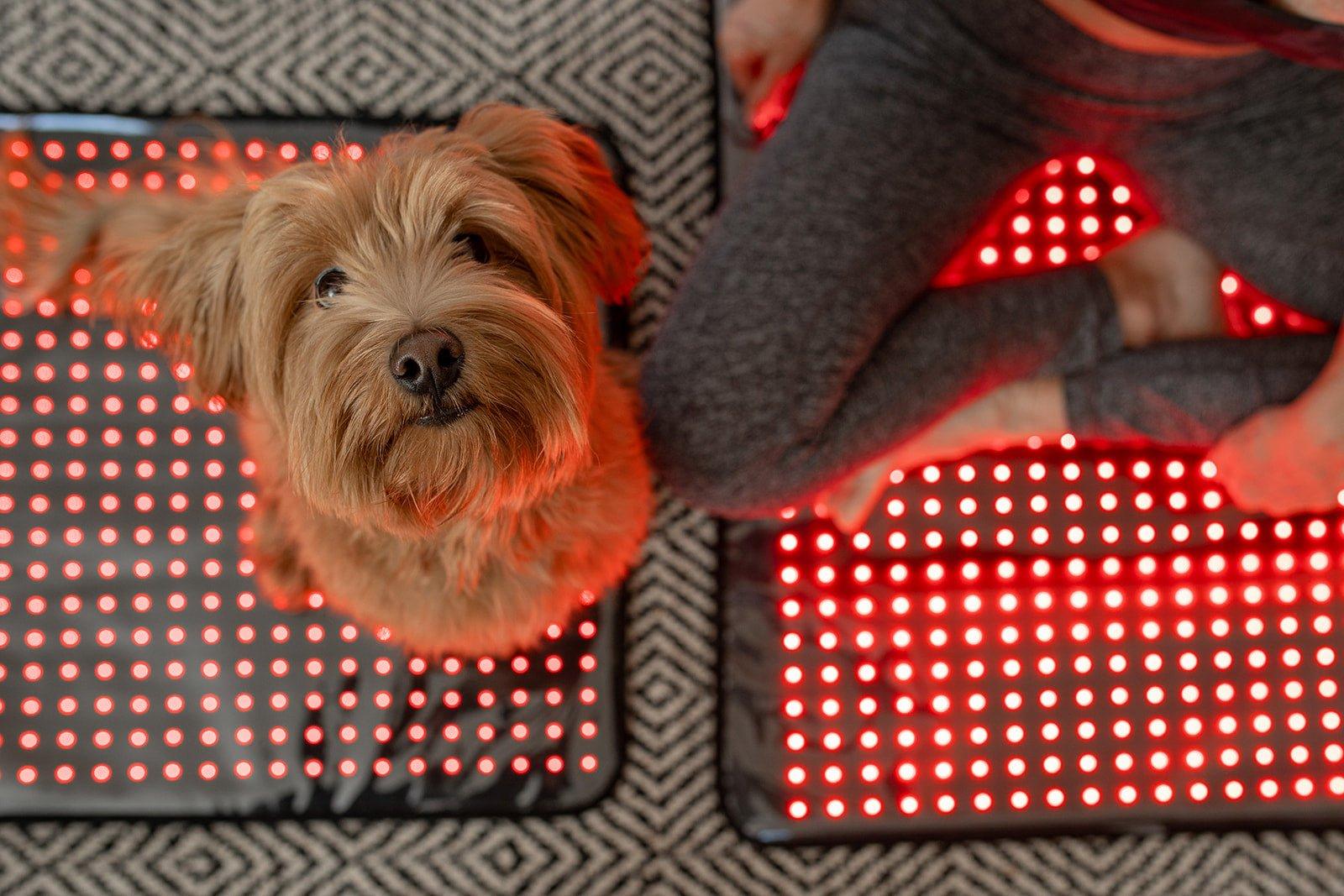Proper Frequency and Duration for Red Light Therapy Dogs
Just How Red Light Therapy Can Boost Your Dog's General Health
Red Light Therapy has actually become a promising choice for improving canine health and wellness. This non-invasive treatment stimulates mobile activity and advertises healing in pets struggling with numerous conditions. Many pet dog owners report noticeable benefits, including discomfort relief and improved wheelchair. Recognizing the potential applications and underlying devices is important. What particular problems can it address, and just how can it be securely incorporated right into a pet dog's care routines? The answers might surprise you.
Recognizing Red Light Therapy: What It Is and How It Functions
Although red light therapy has actually gotten appeal in human medication, its application for canines is significantly identified for its prospective advantages. This non-invasive treatment makes use of specific wavelengths of light, commonly in the near-infrared and red spectrum, to promote cellular function. The underlying concept includes the absorption of light by mitochondria, which boosts ATP manufacturing and improves cellular metabolism.
Because of this, red light therapy advertises boosted circulation and help in tissue repair work. The therapy is provided through gadgets such as lasers or LED panels, which can be guided at particular areas of a dog's body. Treatment sessions are normally brief, making it a hassle-free choice for pet dog proprietors.
Understanding this technology's mechanisms can aid caregivers make educated decisions regarding their canine's health care. As study proceeds to evolve, the rate of interest in red light therapy as a corresponding therapy technique for numerous canine conditions is likely to expand.

Benefits of Red Light Therapy for Dogs
Red light therapy provides numerous significant benefits for dogs, consisting of efficient discomfort relief and an accelerated recovery process. This therapy can boost wheelchair and flexibility, making it particularly beneficial for aging or wounded animals. As even more animal proprietors look for alternate treatments, comprehending these advantages ends up being increasingly important.
Discomfort Alleviation Applications
Lots of pet owners are transforming to red light therapy as an encouraging option for reducing pain in their family pets. This non-invasive therapy makes use of certain wavelengths of light to pass through the skin, stimulating mobile task and reducing swelling. Pet dogs dealing with chronic problems such as arthritis, hip dysplasia, or post-surgical pain may experience substantial relief through this therapy. Research studies indicate that red light therapy can boost blood flow, aiding to supply essential nutrients to impacted areas, further contributing to pain decrease. Furthermore, it may assist to reduce the dependence on pharmaceutical pain reducers, which usually feature unwanted negative effects. As an outcome, many vets are progressively suggesting red light therapy as a efficient and secure alternative for taking care of pain in pet dogs.

Accelerated Recovery Process
The advantages of red light therapy prolong past discomfort alleviation, playing a vital duty in accelerating the recovery procedure for pets. This ingenious therapy advertises mobile regeneration, stimulating the manufacturing of ATP, which boosts power schedule for healing tissues. Additionally, red light therapy increases blood circulation, bring about enhanced oxygen and nutrient shipment to injured locations. This increased circulation not only aids in faster recuperation however also lowers inflammation, a typical barrier to healing. On top of that, the therapy encourages collagen production, vital for tissue repair work and regeneration. In general, by promoting these organic procedures, red light therapy significantly shortens recovery times, enabling pets to return to their normal activities faster and with greater vitality.
Boosted Wheelchair and Flexibility
Improved mobility and flexibility are considerable benefits of red light therapy for dogs, specifically for those struggling with joint pain or stiffness. This non-invasive treatment uses specific wavelengths of light to pass through cells, advertising enhanced flow and minimizing swelling. Consequently, canines often experience remedy for pain connected with arthritis, hip dysplasia, or post-surgical healing. Routine sessions can boost cellular repair and boost muscle mass function, allowing dogs to regain their natural variety of motion. Proprietors have actually reported noticeable enhancements in their pet dogs' capability to run, jump, and take part in activities they as soon as appreciated (Red Light Therapy Dogs). Ultimately, red light therapy not just helps ease discomfort but also adds to a much more energetic and satisfying lifestyle for canines, boosting their general lifestyle
Conditions That Can Be Cured With Red Light Therapy
Although red light therapy has gotten popularity in different fields, its application in veterinary treatment, particularly for canines, has shown promise in treating a variety of problems. This non-invasive treatment method is believed to assist in reducing discomfort and inflammation linked with arthritis, aiding older dogs reclaim wheelchair. In addition, it has been utilized to assist in the healing of injuries, burns, and surgical incisions, promoting faster recovery times.
Skin conditions, such as dermatitis and warm spots, might additionally respond positively to red light therapy, decreasing irritation and encouraging healthier fur growth. Additionally, the therapy can be useful for dogs dealing with problems like hip dysplasia, tendon injuries, and muscle stress. By promoting cellular fixing and improving circulation, red light therapy uses an all natural approach to enhancing the general wellness of canines, offering relief and advertising a far better top quality of life.
The Science Behind Red Light Therapy
Red light therapy operates the principle of photobiomodulation, which includes the application of specific wavelengths of light to stimulate cellular processes. These wavelengths, generally varying from 600 to 1000 nanometers, penetrate the skin and are taken in by mitochondria, the energy-producing parts of cells. This absorption improves ATP manufacturing, bring about boosted energy accessibility for mobile functions.

Research studies suggest that red light therapy may also modulate immune reactions and check over here support general mobile health. By using these organic systems, red light therapy offers a non-invasive therapy choice that can contribute significantly to a dog's well-being and recuperation from numerous problems.
How to Integrate Red Light Therapy Into Your Dog's Routine
Incorporating red light therapy right into a pet's regimen can be an uncomplicated process, offered that family pet proprietors approach it with treatment and uniformity. Initially, choosing a suitable device is basic, as choices range from handheld systems to larger panels. Owners ought to begin by presenting the therapy progressively, allowing their canines to accommodate to the light exposure. Sessions can be scheduled for around 10 to 20 minutes, preferably a couple of times a week, relying on the pet dog's needs and the advice of a vet
Establishing a comfortable atmosphere is crucial; utilizing a silent room where the pet dog feels kicked back can enhance the experience. Throughout the sessions, owners can involve their pet dogs with comforting voices or mild stroking to create a calming ambience. Keeping an eye on the pet's response is navigate to this site vital to ensure the therapy is enjoyable and valuable, inevitably assisting to enhance their overall health.
Security Considerations and Measures for Red Light Therapy
When thinking about red light therapy for canines, safety needs to constantly be a leading concern to ensure a positive experience. Pet dog proprietors must speak with a vet before starting any type of therapy, especially for pets with pre-existing conditions or those taking medicines. It is necessary to select devices specifically designed for animals, as human tools may not appropriate.
Appropriate eye security is important; both the pet dog and the trainer must wear safety glasses to shield their eyes from potential damage. Furthermore, sessions should be checked closely to stay clear of overexposure. It is recommended to begin with shorter sessions and gradually increase duration based on the canine's action.
Proprietors need to also observe their animals for any kind of indicators of discomfort or unfavorable reactions during and after treatment. By complying with these safety factors to consider, red light therapy can be a risk-free and useful option for enhancing a pet dog's health.
Frequently Asked Inquiries
Just how Usually Should I Make Use Of Red Light Therapy on My Dog?

Can Red Light Therapy Change Typical Vet Therapies?
Red light therapy must not replace traditional vet treatments. While it may match treatments by promoting healing and reducing discomfort, speaking with a vet stays vital for complete treatment and addressing hidden health and wellness issues in pets.
Are There Any Type Of Negative Effects of Red Light Therapy for Dogs?
Red light therapy for pet dogs normally has very little negative effects, such as momentary skin redness or warmth at the therapy website. Most canines tolerate the therapy well, however monitoring for any unusual reactions is suggested.
What Is the Perfect Duration for each and every Red Light Therapy Session?
The optimal duration for every red light therapy session generally varies from 10 to 20 minutes, depending upon the pet dog's certain needs and condition. Consultation with a vet is recommended to customize the therapy suitably.
Is Red Light Therapy Suitable for All Dog Breeds?
Red light therapy is generally appropriate for many pet dog types. Nevertheless, specific health conditions and sensitivities may influence its applicability. Consulting a veterinarian guarantees the therapy is advantageous and risk-free for each and every specific dog.
Numerous pet owners are turning to red light therapy as an encouraging service for relieving pain in their animals. Boosted wheelchair and flexibility are considerable advantages of red light therapy for pets, specifically for those enduring from joint pain or tightness. Red light therapy runs on the principle of photobiomodulation, which includes the application of details wavelengths of light to promote mobile procedures. Research study shows that red light therapy can advertise recovery, lower swelling, and ease discomfort in dogs. Red light therapy for canines usually has very little side effects, such as temporary skin soreness or warmth at the therapy site.